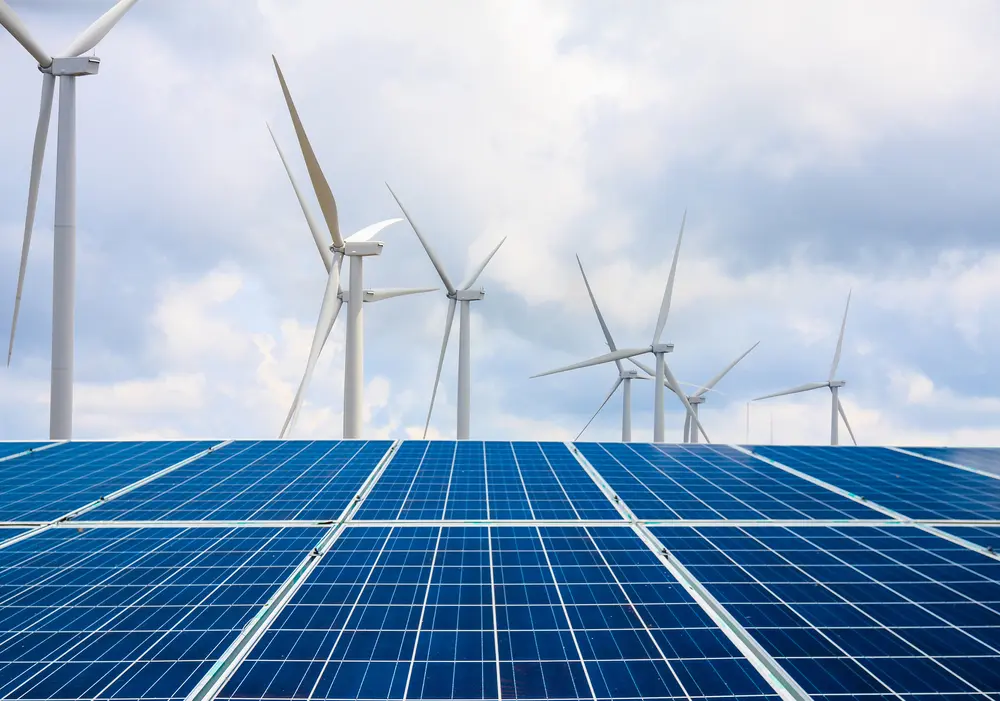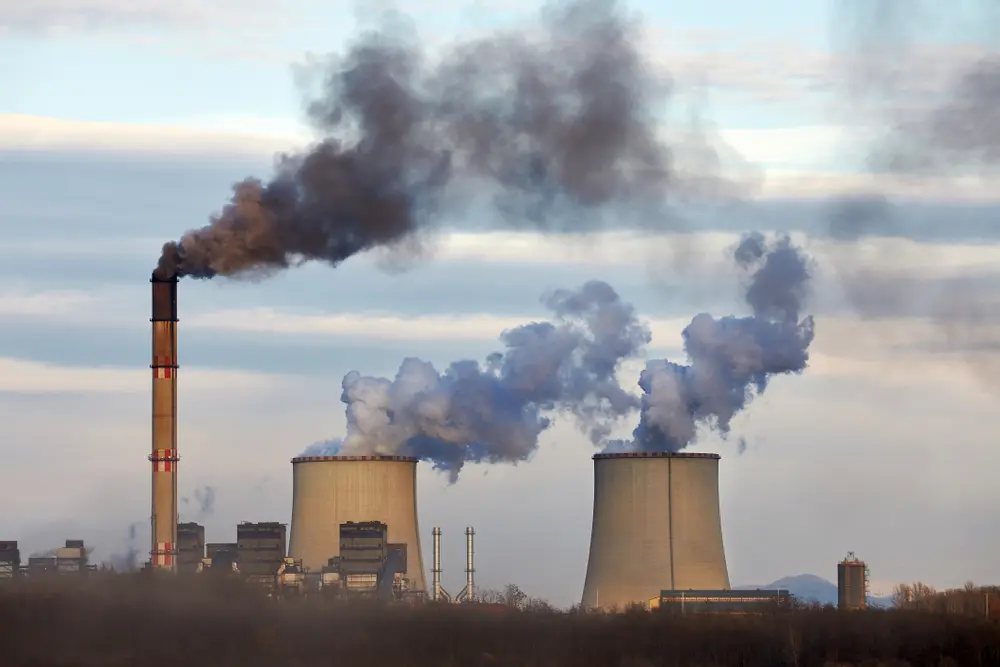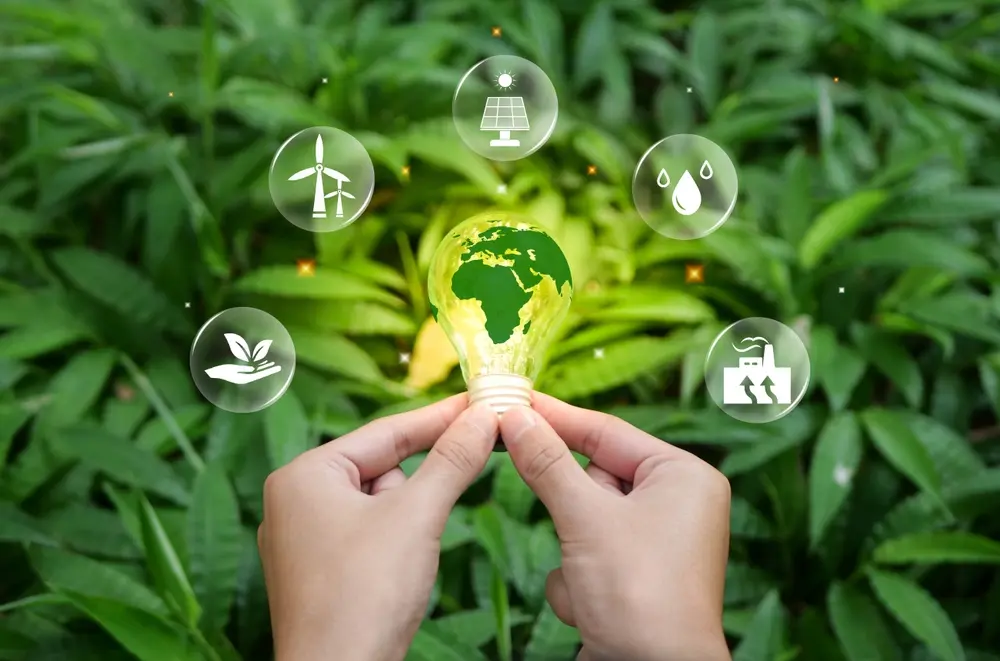The competition between alternative energies and fossil fuels has reached a crucial point in the global energy landscape. With renewable energies taking advantage of inexhaustible natural sources and fossil fuels facing limitations and environmental consequences, the transition towards a sustainable energy supply is essential.
In a context where climate change and the reduction of greenhouse gas emissions are priorities, the debate on the energy future takes on unparalleled importance. Examining the impact of renewable energies compared to fossil fuels is essential to understand how these alternatives can play a relevant role in achieving a cleaner and more sustainable energy system.
What are alternative energies?

They are energies that come from a source other than fossil fuels such as oil, coal and gases1. As their name indicates, they function as an “alternative” to the fuels that have been implemented since the industrial revolution.
They are also known as “renewable energies”, since they come from natural sources that are replenished at a very fast and constant rate. Some examples of these sources are sunlight and wind, which in addition to being abundant, are present around us (see figure 1). It is important to note that although nuclear energy is considered alternative, it is not renewable, as it uses uranium, a finite resource.
This type of energy has two great attractions, one of them is its constant availability, since the majority of infinite resources are used. Its other attraction is that energy generation through any of these sources does not generate high greenhouse gas emissions, which greatly benefits the environment.
Types of alternative energy
- Wind energy: It is one of the cleanest and most accessible energy sources in the alternative energy portfolio. It is the type of energy that is produced by using the wind to generate electricity. Wind turbines are equipment used to harness the kinetic force of the wind and produce electrical energy; they can be located on land or at sea2.
- Solar energy: It is the energy resource that can be found in greatest abundance; its conversion process into electricity is through solar technologies such as photovoltaic panels or concentrating mirrors. Among its benefits is its use even on cloudy days and the generation offers heat, cooling, lighting and fuels for different applications2.
- Hydraulic energy: Takes advantage of the movement of water from higher to lower heights to generate electricity. It is produced in reservoirs and rivers, using stored water or the available flow. Hydroelectric reservoirs have multiple uses, such as water supply, flood control, and power generation. Although it is the main source of renewable energy, it depends on stable precipitation regimes and can be affected by droughts or changes in ecosystems.
- Geothermal energy: Takes advantage of the heat from the Earth’s interior2, extracted from geothermal deposits through wells or other means. Upon reaching the surface, fluids at different temperatures can be used to generate electricity. This technology used for electricity generation has been in operation for more than 100 years, being truly stable.
- Biomass energy: “Bioenergy” comes from biomass, which is produced through different organic materials such as wood, charcoal, manure and agricultural crops2. It is commonly used to generate heat, electricity and liquid biofuels, so it is mainly used in areas. Modern systems include crops, agricultural residues and organics. Although it generates greenhouse gas emissions, it has lower levels compared to fossil fuels.
- Nuclear energy: It is obtained from the fission of the atomic nucleus, a reaction where it is divided to release energy. It is a process that takes place in a power plant, where rods of nuclear material are used to regulate the amount of electricity generated. In this way, the speed of the chain reaction is controlled. Currently, the debate about whether nuclear energy is renewable remains constant.
- Hydrogen gas: It is an alternative fuel with great potential due to its abundance, contributing approximately 75% of the mass of the universe3. Although it is currently produced mostly from fossil fuels, there is a sustainable version called “biohydrogen.” This version is produced by means of an electrolyzer, which separates hydrogen from water molecules, generating hydrogen without harmful emissions.
What are fossil fuels?

They are those sources of energy that originate over millions of years through the decomposition of organic matter. Currently, they continue to be the predominant resources on the energy landscape, representing 80% of global primary energy demand, according to the United Nations.
These resources are not renewable; Being formed from the remains of plants and animals, they are limited and will eventually become extinct. Unlike renewable sources, such as solar or wind, they are not replenished through biological processes. Additionally, its exploitation also causes greenhouse gas emissions (see figure 2), driving the search for more sustainable and renewable alternatives for the global energy supply.
Types of fossil fuels
- Oil: Known as “black gold”, it is a mixture of compounds such as petroleum gas, diesel, kerosene, gasoline and lubricating oil. It is formed from the decomposition of animals and plants, whose remains are deposited at the bottom of the sea. With the compression of sediments, and the influence of high temperatures and pressures, these remains are transformed into oil. Refineries carry out separation processes, known as oil refining, to obtain its components. This resource has various uses, from fuels to produce energy, to the manufacture of plastics, lubricants and other industrial products.
- Natural gas: It is a fossil fuel composed mainly of methane, with smaller amounts of natural gas liquids (NGL) and non-hydrocarbon gases such as carbon dioxide and water vapor. Classified as a fossil fuel and natural resource, it is usually found associated with crude oil in high-pressure reservoirs. Among its uses are electricity generation, heating and as vehicle fuel. Its form associated with light liquids is called “wet gas”, while its non-associated form, without oil, is “dry gas”.
- Coal: Coal is a combustible sedimentary rock that can be used as a source of energy by burning it. Mainly composed of carbon and hydrocarbons, it releases energy through combustion. It is the world’s main source of electricity generation and the most abundant fossil resource in countries like the United States. Due to its formation over millions of years from organic remains, coal is considered a non-renewable resource due to its long development and limited supply.
Environmental impact

Alternative energies play a crucial role in combating the effects of global warming, counteracting extreme events and restoring ecosystems. By adopting renewable sources, countries can adapt according to their resources, whether wind, water or sun, avoiding external dependencies and energy crises.
This change has a positive impact by reducing polluting emissions, contributing to the mitigation of climate change4. Unlike traditional energies, renewable energies do not generate greenhouse gases, directly improving air quality (see figure 3) and public health. In addition, they provide access to clean energy in remote areas, boosting social development and reducing inequalities.
In the case of fossil fuels, their use produces effects that unfold in various ways, threatening the stability of our ecosystem. The combustion of these fuels emits large amounts of carbon dioxide and greenhouse gases, intensifying global warming and triggering extreme climate changes, such as desertification, intensified storms and accelerated melting of ice.
Furthermore, released air pollutants, such as nitrogen oxides and fine particles, affect human health and contribute to air pollution. The extraction of fossil fuels also causes oil spills, damaging marine life, and the destruction of natural habitats, impacting biodiversity and flora.
Sustainability
The sustainability of alternative energies is a fundamental aspect for mitigating environmental impact and guaranteeing long-term clean energy supplies. Obtaining energy from sources such as the sea, the sun and the wind, which have a minimal environmental impact, and have the ability to renew themselves naturally, is essential for a cleaner and more sustainable future. Although not all alternative energy sources are sustainable, the distinction lies in their environmental footprint and long-term viability.
On the other hand, fossil fuels represent an insurmountable challenge for sustainability, due to the way they are obtained, which requires millions of years of decomposition of organic matter, making their depletion inevitable, and the negative environmental impacts during their extraction and combustion contradict the fundamental principle of satisfying needs without compromising the well-being of future generations. Its continued use compromises the possibility of a sustainable and environmentally responsible energy supply in the long term.
Costs
The profitability of alternative energy sources to be implemented in energy schemes has always been one of the key points when considering their possible adoption. And, despite the great attractiveness of these energy alternatives, their use can represent various economic challenges.
A clear example of this is the difficulty behind generating energy through hydrogen, an element that is considered the “gas of the future.” It has excellent properties and attributes to become a new energy reference, however, its storage and transportation continue to be obstacles to overcome.
However, there are cases such as wind and solar energy, which over time have become increasingly accessible, becoming competitive alternatives. And with constant technological advances, they could become the main options for producing electricity.
Although fossil fuels continue to be used in greater quantities due to their lower costs, it is very likely that their profitability will decrease in the future. As it is a finite resource, as its reserves decrease, its price will increase until it is no longer profitable. In addition, there are indirect costs that this energy model entails, such as costs related to the impact on the environment and public health.
Efficiency
Energy efficiency is an attribute that allows us to determine those sources that can carry out tasks and achieve established objectives, with the least possible use of energy. This is a very relevant concept since through efficient energy sources, benefits such as economic savings, mitigation of impacts on the environment and reduction of greenhouse gas emissions can be achieved.
Generally, alternative energies, especially those that come from renewable sources, are more efficient than those energy models that are not. The reason for this is that sources such as the wind, the sun and the sea use infinite resources that allow them to be used continuously.
In order to determine energy efficiency, certain aspects must be taken into account, including the costs of fuels used, production costs and even costs of damage caused to the environment6. Considering all this, we can determine that fossil fuels have lower energy efficiency than some alternative options.
In general terms, the efficiency of alternative and renewable energies considerably exceeds that of non-renewable resources; this is mainly due to the fact that there is no need to extract and transport resources from the source to the point of consumption. These types of practices have led to unfortunate accidents such as spills that are harmful to ecosystems. Which clearly demonstrates this mode of energy generation is not as efficient as its alternatives.
The energy transition

The constant debate between these two energy models has as its main focus the future development of the energy transition. This term is a process of changes in the structure of energy generation, as we know it. Its purpose is to adopt an electricity and energy production system that allows a sustainable future while minimizing damage to the environment (see figure 4).
Considering past antecedents, the transition is not something new, at each stage of human development, they have adopted different energy sources to improve their quality of life (for example: wood, coal and oil), however, what characterizes This new process of adopting a new energy system is that its main objective is the mitigation of damage to the planet.
The most effective way to achieve this is through the decarbonization of energy, hence the utmost importance of alternative sources. These sources can not only meet energy demands, but also offer the opportunity to positively impact the environment and the planet, ensuring a better world for future generations.
Thanks to recent technological advances, many alternative sources have improved their efficiency, becoming the remaining link for this energy change. In turn, having clean energies that have a certain maturity, these give way to the development of new projects and new energy production sectors, generating as a result, an ecosystem composed of efficient and planet-friendly energies.
Conclusion
In this scenario of competition between alternative energies and fossil fuels, the transition towards a sustainable energy supply becomes imperative. Renewable energies, through the use of inexhaustible natural sources, are imposed as a solution to environmental and climate challenges, counteracting effects such as global warming and the destruction of ecosystems.
The sustainability of these alternative energies lies in their ability to meet energy demands without compromising future generations, while fossil fuels, with their inevitable depletion and negative impacts, represent an insurmountable obstacle to achieving long-term sustainable development. As time goes by, efficiency and costs will increasingly favor alternatives, generating as a result the urgent need for an energy transition towards a cleaner and more sustainable future.
References
- Inspire Clean Energy. (sf). What is Alternative Energy: Types of Alternative Energy Sources . Retrieved November 23, 2023, from https://www.inspirecleanenergy.com/blog/clean-energy-101/types-of-alternative-energy
- United Nations. (sf). What is renewable energy? Retrieved November 23, 2023, from https://www.un.org/en/climatechange/what-is-renewable-energy
- National Grid. (sf). What is hydrogen? Retrieved November 23, 2023, from https://www.nationalgrid.com/stories/energy-explained/what-is-hydrogen#:~:text=Hydrogen%20can%20be%20produced%20from,fuel%20our%20homes%20and%20businesses.
- Funden. (sf). The effects of renewable energy: How does it impact our world? Retrieved on November 24, 2023, from https://www.fundeen.com/blog-energias-renovables/los-efectos-de-la-energia-renovable-como-impacta-en-nuestro-mundo
- Energies of Portugal. (2021, May 25). How much do renewable energies cost? Recovered on November 24, 2023, from https://www.edp.com/es/historias-de-edp/cuanto-cuestan-las-energias-renovables
- Born to Engineer. (sf). What Are The Most Efficient Forms Of Renewable Energy. Retrieved November 24, 2023, from https://www.borntoengineer.com/efficient-form-renewable-energy
- Enel Green Power. (sf). The energy transition. Retrieved November 24, 2023, from https://www.enelgreenpower.com/learning-hub/energy-transition

